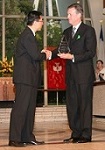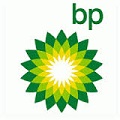Organization Engineering
Accredited Consulting Service for Mr. Anderson MBA BS ChE Accredited Senior Consultant (ASC)
The Appleton Greene Accredited Consultant Service (ACS) for Organization Engineering is provided by Mr. Anderson and provides clients with four cost-effective and time-effective professional consultant solutions, enabling clients to engage professional support over a sustainable period of time, while being able to manage consultancy costs within a clearly defined monthly budget. All service contracts are for a fixed period of 12 months and are renewable annually by mutual agreement. Services can be upgraded at any time, subject to individual client requirements and consulting service availability. If you would like to place an order for the Appleton Greene Organization Engineering service, please click on either the Bronze, Silver, Gold, or Platinum service boxes below in order to access the respective application forms. A detailed information guide for this service is provided below and you can access this guide by scrolling down and clicking on the tabs beneath the service order application forms.
Bronze Client Service
Monthly cost: USD $1,500.00
Time limit: 5 hours per month
Contract period: 12 months
SERVICE FEATURES
Bronze service includes:
01. Email support
02. Telephone support
03. Questions & answers
04. Professional advice
05. Communication management
To apply – CLICK HERE

Silver Client Service
Monthly cost: USD $3,000.00
Time limit: 10 hours per month
Contract period: 12 months
SERVICE FEATURES
Bronze service plus
01. Research analysis
02. Management analysis
03. Performance analysis
04. Business process analysis
05. Training analysis
To apply – CLICK HERE
Gold Client Service
Monthly cost: USD $4,500.00
Time limit: 15 hours per month
Contract period: 12 months
SERVICE FEATURES
Bronze/Silver service plus
01. Management interviews
02. Evaluation and assessment
03. Performance improvement
04. Business process improvement
05. Management training
To apply – CLICK HERE
Consultant profile
Mr Anderson is an approved Senior Consultant at Appleton Greene and he has experience in production, management, and human resources. He has achieved a Masters of Business Administration, Bachelor of Science in Chemical Engineering and an Associate in Arts. He has industry experience within the following sectors: Energy; Chemicals; Manufacturing; Logistics and Healthcare. He has had commercial experience within the following countries: United States of America, or more specifically within the following cities: Los Angeles CA; San Francisco CA; Houston TX; Chicago IL and New York NY. His personal achievements include: unprecedented efficient crisis response performance; improved operating efficiencies 20%; integrated national logistics operations; reduced operational losses 50% and improved regulatory compliance. His service skills incorporate: organization engineering; process analysis; management alignment; process engineering and production optimization.
To request further information about Mr. Anderson through Appleton Greene, please CLICK HERE.

Executive summary
Organization Engineering
Organizations, whether private or public, private sector or public sector, for-profit or not-for-profit, are formed, operated and maintained to perform specific function(s) and produce desired output(s). Such organizations must be process-centric and focused to effectively and efficiently produce their desired output. However, most organizations develop and evolve through inconsistent directions and demands resulting from inconsistent and changing forces, both internal and external. As a result, processes may be altered, enhancements inserted, controls instituted or shortcuts devised in efforts to meet the changes. Organization processes develop eddies and turbulences inhibiting the smooth flow of information, work and output production with the organization operating below potential.
Organization Engineering applies engineering disciplines to align the leadership, management and production levels to form new, refined, effective and efficient organizational processes. The engineered processes deliver smoother, more laminar process flows reducing the organization effort in delivering the desired output. A more optimized organization results with reduced waste, increased efficiency, greater capacity and more effective product output.
Service Methodology
The organization is addressed at the three common process strata: Leadership, Management and Production. In Organization Engineering the relevant processes at each strata are broken down and the critical components necessary to move the processes forward retained. The critical components are optimized for purpose and reassembled into more effective and efficient strata processes. Leadership process engineering ensures the desired organization output(s) are defined, relevant and in clear focus while establishing visible champion support for the organization effort. Management process engineering ensures clear organization objectives, competencies and accountabilities support the desired output(s). Production Engineering ensures people, equipment, materials and environment are aligned for capability and effectiveness. Excessive interactions among the strata that cause eddies and turbulences in the processes are reduced or eliminated resulting in smoother, more laminar flows. The engineered processes, together and aligned, form new, refined organizational processes with increased efficiency, greater capacity and producing more effective outputs.
Service Options
Companies can elect whether they just require Appleton Greene for advice and support with the Bronze Client Service, for research and performance analysis with the Silver Client Service, for facilitating departmental workshops with the Gold Client Service, or for complete process planning, development, implementation, management and review, with the Platinum Client Service. Ultimately, there is a service to suit every situation and every budget and clients can elect to either upgrade or downgrade from one service to another as and when required, providing complete flexibility in order to ensure that the right level of support is available over a sustainable period of time, enabling the organization to compensate for any prescriptive or emergent changes relating to: Customer Service; E-business; Finance; Globalization; Human Resources; Information Technology; Legal; Management; Marketing; or Production.
Service Mission
Our service mission is to assist members of an organization apply engineering disciplines in aligning the leadership, management and production strata to form new, refined, effective and efficient organization processes. The engineered processes are designed to deliver smoother, more laminar process flows reducing organization stressors in producing the desired output. A more optimized organization results in reduced waste, increased efficiency, greater capacity and more effective product output. The approach has been applied throughout numerous industries under radically different circumstances. Some notable results include: Formed management organization for crisis response in the largest offshore oil spill in U.S. history delivering unprecedented performance while reducing costs by over 20%; constructed the integration of 10 U.S. logistics operations into a network increasing capacity over 25% without workforce addition; designed performance programs in physician practice management to reduce patient, worker, and operational losses by $5M annually over three years; applied multi-level management approaches throughout an integrated energy corporation reducing employee, equipment, and operational losses over 30% with improved regulatory compliance.

Service objectives
The following list represents the Key Service Objectives (KSO) for the Appleton Greene Organization Engineering service.
- Leadership Strategies
Organization initiatives to capitalize on evolving business dynamics. Dynamic technical and strategic plans balancing organization capabilities with demands of the markets in which they compete. Develop plans and objectives for the organization to achieve performance. Clearly define the organization vision and supporting strategic goals to compete successfully…a “focused” strategy. Identify opportunities for improved performance within the “focus” area to increase speed of action and leverage valuable resources. Develop performance improvement alternatives. Prioritize potential returns, risk exposures and risk mitigations into a set of organization tactics. Organize selected performance solutions for planned implementation based potential investment return and associated organization risks. Monitor the plan for deployed improvement solutions and evaluate against expected organization performance…needs redefine goals. - Management Integration
Quality, Productivity and Safety/Environment balanced in mainstream business practices. Alignment and integration of product quality/acceptability, environmental protection/worker safety and process productivity/ROI to contribute to and expand achievement of organization goals. The desired balance of environmental/safety with quality/customer acceptability and productivity/ROI must be identified to create the “complete” vision and competitive goals. From the “vision” a business strategy integrated with product acceptability environmental protection/worker safety and process productivity/ROI is developed and a SMART plan (Specific, Measurable, Action-Based, Relevant, Time-Bounded) created. The SMART plan is a roadmap for development of management controls: expectations/standards, employee training/tools and monitoring of performance. Implementation of the management controls result in desired work and output performance with on-spec product and environmental/employee protection built in. - Change Management
Integrate business changes by assessing skills and resource requirements then developing sensible organizational changes and employee-enabling programs. Change structuring is formed around appropriate life cycle steps. Design a S.M.A.R.T Plan (Specific, Measurable, Action-Based, Relevant, Time-Bounded) a “road map” for managing the needed change to both maximize value and minimize waste. Establish succinct standards that pinpoint roles, responsibilities and key performance indicators. Ensure clarification of performer and technology requirements. Update processes, training and/or technology to be competent within the desired changes. Identify and delineate resources. Measure and evaluate key performance indicators. Communicate results with clear performance feedback. High performance dictates continuous improvement – Solicit input from customers and other stakeholders. - Process Engineering
Create or measurably increase performance by reengineering organization value chain and incorporating best practices. Innovative value creation. Inventory all related organization processes. Assess current situation through interviews and observations. Search for interdependencies. Eliminate processes not adding organization value. Identify processes most critical to success. Use Paredo’s Principle – 80/20 Rule. Break the process into steps – must move the process definably forward. Prioritize process strengths and weaknesses. Identify “ripple” effects. Identify gaps between the desired performance and actual performance. Analyze the steps for underlying performance causes. Eliminate process steps not adding organization value. Assess for simplicity. Check step requirements for any match problems with performers. Design the “to be” concept and evaluate with best practices. Engineer the detailed “to be” lean steps and total process. Pilot test the “to be” process. Improve procedures and practices to reflect the “to be” processes. Capitalize on new or improved technologies. Train performers for any newly required skills/knowledge. Sequentially deploy the “to be” processes. Pilot test for redesigned process performance and any “ripple effects”. Realize “value-added” organization improvements. - Project Leadership
Value realization through project successes. Seamless performance improvement project leadership and management control from conceptualization through delivery. Analyze organization information to clarify key project success criteria, needs and value drivers. Establish business, organizational and technical requirements. Establish project scope, cost estimates, time schedules and resource requirements. Agree on measurements, critical success factors and valuation. A “game plan” – Tasks, schedules, resources and management controls are required to ensure successes and value realization. Execute the “game plan”. Responsibly communicate status and deliverables. Excel in delivering accomplishments and training to drive-home successes and value. Value realized. Solutions delivered – practical and real-world. Mission accomplished.

Achievements
British Petroleum Plc
My consulting practice was contacted to help establish and build a management organization and unprecedented organization processes to oversee the numerous contractors and subcontractors responding to the Deepwater Horizon Drilling Platform explosion, fire and oil spill in the Gulf of Mexico. The incident was rapidly on its way to becoming the largest offshore oil spill in U.S. history. We formed and staffed in four weeks a 70-person organization to provide direction, oversight, monitoring and fiscal control over 13 prime contractors and 80 subcontractors in a 400-mile area encompassing Mississippi, Alabama and Florida with over 15,000 onshore response workers, thousands of pieces of equipment and 500 on-water vessels. The cost for this response contractor work exceeded $1 billion. BP was the Responsible Party (RP), strategic work direction came through the Unified Command (UC) organization and work was coordinated through each state in which the work was performed. Daily collaborations were maintained with representatives of the EPA, OSHA, NOAA and political representatives from each Governor and each county/parish. We able to achieve unprecedented response performance while reducing costs by 20% and delivering organization returns exceeding 300%. Through comprehensive fiscal controls performance integrity was ensured while client costs were reduced an additional 5%.
Panasonic Logistics Company of America
For a major international consumer and industrial electronics conglomerate, I led the team-based redesign of business processes and asset streamlining in a unionized labor environment. This 18-month effort involved teams of executives working with representatives from each of the 10 logistics centers to focus on each of the 15 key performance processes. The representatives, trained in team-based projects, addressed as a team each key process, through the assessment, performance-improving redesign and implementation of the resulting new processes. Free discussion, brainstorming and conflict resolution led to new solutions and commitment by the team members to the changes. With each team member committed to their respective new process, they were more effectively able to carry the change back to their locations and achieve buy-in by their co-workers. Through redesigned business processes and asset streamlining, capacity was increased an estimated 25% and policies and procedures were reduced, standardized and simplified in a unionized labor environment. The 18-month project achieved all deliverables on schedule and on budget.
MedPartners LLC
As a consultant, I led a 17-person team deploying leading-edge clinical process improvement programs for the western operations of the nation’s largest physician-practice management organization with over 3,000 employees and in excess of 100 clinical locations. The adaptation of management and process improvement techniques integrated with the corporate business model was designed to reduce patient, worker, and operational losses by $5M annually over three years. This improved process efficiency by integrating sophisticated loss prevention management principles used in high hazard industries with requirements of the Joint Commission for Accreditation of Healthcare Operations, the principal U.S. healthcare accreditation body. The performance improvement program for the healthcare organization included greatly-improved security monitoring, tracking and control of medical supplies (drugs, syringes, sharps, etc.) as well increased diligence in the controlled use of patient and other confidential information.
Unocal Corporation
I led a global effort to implement integrated process improvement techniques to capitalize on production management successes including quality, security, human resources, accounting/finance management and safety/environmental management worldwide for a global petroleum exploration, production, transportation and retail marketing, chemicals manufacture and geothermal energy production conglomerate with 17,000 employees, 100 offshore platforms, 6 refineries, 5 tankers, 8,000 miles of pipelines and over 2,000 retail locations. Identified critical needs through extensive team-based operational audits as the foundation for management-centric performance improvement programs. Applied critical process analyses and in-depth industry knowledge to maximize impact, improve consistency and minimize operational disruption reducing employee, equipment, and operational losses an estimated 30% while improving regulatory compliance.
More detailed achievements, references and testimonials are confidentially available to clients upon request.

Industries
This service is primarily available to the following industry sectors:
Energy
Prices have relatively stabilized in the US oil and gas industry. Since the high point in 2014 upstream oil and gas companies faced a 50 percent drop in revenues. Looking ahead to 2016, we see positive developments that could help the industry evolve to a better place. Demand, decline, production, and a leaner, stronger industry will all have an impact. So far, the exploration and production sector of the industry have employed traditional responses to severe price declines: Reduce capital expenditures and defer major capital projects; cut operating expenses and headcount and; re-negotiate with suppliers for better pricing. Going forward, low crude prices are forcing a powerful innovation in the way oil is being developed and produced. We are in the early stages of what can be achieved in terms of reducing unit costs and achieving higher return on capital. Operating and process improvements will require new thinking, new approaches and new creativity. There are some developments that may be positive from a pricing perspective. US demand is responding to lower oil prices customarily with increased car sales, especially larger cars, SUV’s and trucks. As auto sales go up, expect to see increased US demand. Asian demand is showing strong growth. China, despite the stock market uncertainties, remains a huge source of global demand and continued growth. Natural reservoir production decline, which has historically been four to five percent globally, means that even without demand growth, the oil and gas industry must produce another four million barrels per day every year just to keep up with current demand. This naturally puts upward pressure on pricing. Total US production finally started to decline and that trend is expected to continue in the near future. Billions of dollars of investments have been deferred due to the low price environment, which translates to millions of barrels that will not be produced in the years to come. This sets the stage for a price rally.
Chemicals
The U.S. chemical industry has been facing a number of economic headwinds. A strong dollar hampered exports. Trade partners Brazil, Japan, and Russia flirted with recession while growth in China slowed. Yet output increased by almost 4% last year, thanks in large part to consumers. Output should continue to expand, though the growth pace should slow somewhat. Such continued recovery from the global recession should continue to boost demand for autos, construction materials, and business equipment. Sales in the US of cars, SUV’s and trucks are expected to edge up with increased hiring and better availability of credit. Basic chemicals, synthetic rubber, and specialties will top the list of growth segments. Chemical companies will likely see prices continue to slide in some product areas, but even with the fall in oil prices, US industries still have favorable competitive positions chemical feedstock costs as natural gas prices have remained low as well. Low prices for agricultural commodities as well as oil and gas have dampened demand for chemicals used in those industries. European chemical firms should continue to see low oil prices, a key benefit for a region that relies on oil-derived naphtha as its main raw material. However, the slowing of growth in the Chinese economy may impact Europe’s major chemical firms, which now generate much of their income from China. In summary, the cost of running naphtha-based ethylene crackers should continue to be relatively low for the foreseeable future supporting margins.
Manufacturing
Industrials are facing challenges and opportunities driven by product innovation, changes in talent requirements, and energy disruption. Capital allocations should increasingly center on new technologies such as the industrial internet and advanced manufacturing. If managed correctly, these innovations can support changes in productivity by allowing firms to more actively monitor and optimize plant, asset, and supply chain performance. The proliferation of smarter products and embedded sensors with new enhanced communication infrastructure is leading to greater volume, velocity, and variety of information available to the manufacturer. Firms are using these analytics to not only improve process operations, but also to improve product lifecycle management. Until recently, the hiring focus for industrial firms was on recruiting, retaining, and training hardware engineers. However, the proliferation of advanced technologies will create a demand for employees who understand traditional hardware, as well as those that understand software and programming. New production processes and organization structures may be needed. China’s slowing economic growth is having an adverse impact on industrial products sector. Brazil is fraught with its own challenges as the economy slows. Private consumption contracted for the first time in a decade as high inflation, tightening credit availability, deteriorating labor market, and corruption issues slowdown infrastructure investment. The combination of these factors will affect the outlook for US industrial products firms.
Logistics
Improving existing distribution systems, appropriately incorporating digital technology into physical locations and identifying innovative ways to leverage existing assets will be critical success factors. Optimized distribution systems and enhanced supply chains will be at a competitive advantage in the coming year. While supply chain and distribution costs are not necessarily rising, consumers increasingly expect faster delivery—at the same price points. This pressure is due to both increased consumer demand and competition between brick-and-mortar and digital retailers with lower overhead. A significant shift in consumer expectations with regard to shipping is that consumers do not want to pay for it. Supply chain management has and will continue to be a key challenge for industrial products organizations. While many firms have gone to great lengths over the last several years to increase supply chain efficiency, a consequence of these efficiency moves has been an increased level of complexity. Expect to see industrial products firms consolidate in an effort to better control their supply chain, choosing a better balance of simplicity and production costs and assess if material and labor savings justify the coordination and oversight costs involved. Forward-looking firms are not only improving their distribution and supply chains—they are identifying alternative fulfilment methods and leveraging their existing real estate. A more distributed supply chain network may be warranted. Moving forward, retailers should consider dedicating more of their supply chain network space to fulfilment (e.g., customers buying online and picking up in stores) and shipment processing, incorporating digital, and advanced technologies for efficiency and to improve the customer experience. With more data mining and increased digital communications comes more risk. Cyber security will continue to cut across all aspects of the business and continue to be a major concern.
Healthcare
The biggest issue both worldwide and in the US continues to be health care cost. All other trends stem from the cost factor, including access to care, advances in care (especially new drugs), accountable care/alternative payment models, and digital consumer engagement. Despite spending about 18% of GDP on health care, the US underperforms in areas such as efficiency, access, equity, and outcomes. In addition, an estimated 34 million people in the US still lack health insurance. Accountable care organizations, bundled payments and other reimbursement models are starting to address both access and affordability. Some progress is being made toward preventing emergency department visits and prolonged hospital stays. Care is moving away from hospitals and into more accessible, less costly settings—even home, school, and work. Technology adoption will play an important role in helping providers give patients the access and convenience they desire. Digital technologies will likely shape the health care landscape through tools that empower consumers to take better care of themselves, reducing reliance on the costliest and most acute health care resources. Connected health—also known as technology-enabled care—involves the convergence of health technology, digital media and mobile devices. It enables patients and providers to access data and information more easily. Providers can adopt digital tools such as these to help meet population health and value-based care goals. But technology is only part of the equation; the people and processes involved are equally important.
Locations
This service is primarily available within the following locations:
Los Angeles CA
The US economy is expected to continue moderate growth of about 2.5% with national job growth keeping pace. Jobs will be added in the service sector while manufacturing continues to be a mixed bag. Low oil prices are expected to continue as a net benefit to the economy. Consumer spending is expected to continue strong while business investment should be flat. The California economy is seeing job gains generally across the board. Strongest gains are in health services, professional and technical services, administrative services and leisure/hospitality. Job growth is challenged in industries such as finance, insurance, manufacturing and natural resources. Some of this challenge is attributable to the state’s level of corporate taxes and high costs of manufacturing regulatory compliance. Unemployment in the state continues to decline expected to reach about 5.3% by the end of next year. Los Angeles is the fifth most diversified economy in the US according to Moody’s. Los Angeles County employment is growing more slowly than California as a whole (2.4$ v 2.7%). However, Los Angeles County added more jobs than the San Francisco Bay area. The rate of employment growth in Los Angeles County continues to increase. Health Care & Social Assistance account for almost 15% of non-farm jobs in Los Angeles County. The sector led local jobs gains over the past year, growing by 4.8%. Persistent growth in this sector, which is occurring nationally, is attributable in part to the aging U.S. population.
San Francisco CA
The US economy is expected to continue moderate growth of about 2.5% with national job growth keeping pace. Jobs will be added in the service sector while manufacturing continues to be a mixed bag. Low oil prices are expected to continue as a net benefit to the economy. Consumer spending is expected to continue strong while business investment should be flat. The California economy is seeing job gains generally across the board. Strongest gains are in health services, professional and technical services, administrative services and leisure/hospitality. Job growth is challenged in industries such as finance, insurance, manufacturing and natural resources. Some of this challenge is attributable to the state’s level of corporate taxes and high costs of manufacturing regulatory compliance. Unemployment in the state continues to decline expected to reach about 5.3% by the end of next year. The San Francisco area continues to lead the state in job growth with an annual 4% increase in employment. The San Francisco accounted for 10% of all jobs gains in the state. The Professional and Business Services sector continues to account for the largest share of new nonfarm jobs in the San Francisco area led by Computer Systems Design and Related Services. However, the region’s labor market is showing signs of saturation with an unemployment rate of 3.2% and is starting to display signs of winding down.
Chicago IL
The US economy is expected to continue moderate growth of about 2.5% with national job growth keeping pace. Jobs will be added in the service sector while manufacturing continues to be a mixed bag. Low oil prices are expected to continue as a net benefit to the economy. Consumer spending is expected to continue strong while business investment should be flat. Illinois’ economy is improving, but progress has been slow and the state has underperformed the region and nation in key gauges such as jobs, income and output. The state’s labor market is improving, but more slowly than elsewhere. Illinois is among a handful of Midwest states that still have jobs to make up from the recession. Manufacturing face pressure from lower commodity prices and weaker demand for mining and farm equipment and will be slow to revive. Chicago has one of the world’s largest and most diversified economies, with no single industry employing more than 14% of the workforce. Chicago is the most diversified economy in the US according to Moody’s including manufacturing, information technology and health services. The area is home to more than 400 major corporate headquarters, including 31 in the Fortune 500. Chicago employment is expanding at an estimated 1.0% annually driven by gains in construction, leisure & hospitality, business services, and retail. Unemployment has increased slightly to about 5.2% making Chicago part of the 1/3 of US metro areas seeing rises year-over-year according to BLS.
Houston TX
The US economy is expected to continue moderate growth of about 2.5% with national job growth keeping pace. Jobs will be added in the service sector while manufacturing continues to be a mixed bag. Low oil prices are expected to continue as a net benefit to the economy. Consumer spending is expected to continue strong while business investment should be flat. The Texas economy improved although future directional changes in the business cycle look to be flat. Manufacturing and mining and logging employment in Texas declined while overall services bolstered total job growth; construction also contributed more jobs. The energy sector appears to be improving with sustained production and slightly increased rig operation. Texas housing sales increased moderately and Texas home prices have increased more rapidly than the rate of increase for the U.S. Houston is the ninth most diversified economy in the US according to Moody’s. Unemployment has increased slightly to about 5.7% making Houston part of the 1/3 of US metro areas seeing rises year-over-year according to BLS. As expected with current oil prices, job losses are most prevalent in oil- and gas-related industries such as oil production, oil services, machinery, fabricated metal, wholesale trade, and oil-related professional and business services. Job gains have continued in many sectors such as medical care, restaurants, retail, and housing construction somewhat offsetting the energy losses. However, many of these job gains have been built on residual growth and momentum left over from the oil boom years, and may not carry the economy much longer.
New York NY
The US economy is expected to continue moderate growth of about 2.5% with national job growth keeping pace. Jobs will be added in the service sector while manufacturing continues to be a mixed bag. Low oil prices are expected to continue as a net benefit to the economy. Consumer spending is expected to continue strong while business investment should be flat. New York is the eighth most diversified economy in the US according to Moody’s including financial services, real estate, media / entertainment, tourism, arts, retail, restaurants, hospitality], education, healthcare, professional services and manufacturing. New York City is benefiting from strong employment gains in technology, construction, retailing and advertising while finance employment has been sluggish. Unemployment has increased slightly to about 5.2% making New York part of the 1/3 of US metro areas seeing rises year-over-year according to BLS.
Clients
This service’s current clients or employers include:
British Petroleum
BP is one of the world’s leading integrated oil and gas companies. We provide customers with fuel for transportation, energy for heat and light, lubricants to keep engines moving, and the petrochemicals products used to make everyday items as diverse as paints, clothes and packaging. The Upstream segment is responsible for our activities in oil and natural gas exploration, field development and production, as well as midstream transportation, storage and processing. The Downstream segment has global manufacturing and marketing operations. It is the product and service-led arm of BP, made up of three businesses: fuels, lubricants and petrochemicals. BP’s commitment to the U.S. dates back 150 years through our heritage companies, Atlantic Refining and Richfield Petroleum. In the 1960s, the two companies merged, forming Atlantic Richfield or ARCO for short. That same decade, Standard Oil of Ohio (Sohio) and BP reached a deal that led to the first oil to flow from the North Slope of Alaska through the Trans-Alaska pipeline in 1977. Ten years later, BP acquired Sohio and made it the cornerstone of a new national operation, BP America. In 1998, Amoco and BP announced their merger, combining their worldwide operations into a single organization. Overnight, the new company became the largest producer of both oil and natural gas in the U.S. Fast-forward to today: BP is leading the way in helping to meet the energy needs both of America and the world. We care deeply about how we deliver energy to the world. Above everything, that starts with safety and excellence in our operations. Our approach is built on respect, being consistent and having the courage to do the right thing. Everything BP aims to do as a company relies upon the safety of our operations, workforce and the communities around us. We depend upon developing and deploying the best technology, and building long-lasting relationships. We are committed to making a real difference in providing the energy the world needs today, and in the changing world of tomorrow.
British Petroleum – Click Here
Panasonic Logistics Company of America
Panasonic Corporation, formerly known as Matsushita Electric Industrial Co., Ltd., is a Japanese multinational electronics corporation headquartered in Kadoma, Osaka, Japan.
Panasonic Logistics Company of America – Click Here
MedPartners LLC
Caremark was founded in 1993 in Birmingham, Alabama as MedPartners, Inc. by HealthSouth Corporation along with Richard Scrushy, former CEO of HealthSouth, and one time HealthSouth Chief Operating Officer Larry House as a physician practice management (PPM) company. After going public in February 21 of 1995, MedPartners quickly became the largest PPM company through many acquisitions (see Ross-Loos Medical Group). By 1998 MedPartner’s had revenues of $7 billion. In 2000, after it had sold all of its PPM practices, MedPartners changed its name to Caremark Rx. In March 2007, Caremark merged with CVS Corporation to create CVS Caremark, later re-branded as CVS Health. Today the company is one of the nation’s leading pharmacy benefit management (PBM) companies, provides comprehensive prescription benefit management services to over 2,000 health plans, including corporations, managed care organizations, insurance companies, unions and government entities. With net revenue of approximately $37 billion (including approximately $5.8 billion of retail co-payments) in 2006, they are also one of the largest PBMs. Caremark operates a national retail pharmacy network with over 60,000 participating pharmacies, as well as 56 retail specialty pharmacy stores, 20 specialty mail order pharmacies and 9 mail service pharmacies located in 26 states and the District of Columbia.
Unocal Corporation
Unocal Corporation explores, develops, and produces natural gas, crude oil, condensate, and natural gas liquids, with principal operations in North America and Asia. The company operates in three segments: Exploration and Production, Midstream and Marketing, and Geothermal. Exploration and Production segment engages in the exploration, development, and production of oil and gas. Midstream and Marketing segment consists the company’s equity interests in petroleum pipeline companies, pipelines, and terminals in the United States; the North America gas storage business; and the transporting and selling of hydrocarbon. The Geothermal segment produces geothermal steam for power generation. The company also operates geothermal steam-fired power plants in Indonesia and has equity interests in gas-fired power plants in Thailand. Unocal Corporation was incorporated in 1983 and is based in El Segundo, California. As of August 10, 2005 Unocal Corporation operates as a subsidiary of Chevron Corporation.
Unocal Corporation – Click Here

Benefits
Production
- Increased output
- Reduced cost
- Improved efficiency
- Greater reliability
- Improved product
- Simplified process
- Reduced waste
- Fewer errors
- Increased compliance
- Streamlined operation
Management
- Clearer communication
- Reduced oversight
- Increased compliance
- Simplified production
- Simplified training
- Reduced waste
- Improved monitoring
- Reduced correction
- Simplified direction
- Reduced workload
Human Resources
- Reduced turnover
- Improved training
- Clearer direction
- Improved competency
- Specific direction
- Higher capability
- Reduced stress
- Fewer injuries
- Increased performance
- Improved efficiency
Bronze Service
Monthly cost: USD $1,500.00
Time limit: 5 hours per month
Contract period: 12 months
Bronze service includes:
01. Email support
02. Telephone support
03. Questions & answers
04. Professional advice
05. Communication management
SERVICE DESCRIPTION
The Bronze Client Service (BCS) for Organization Engineering provides clients with an entry level option and enables client contacts to become personally acquainted with Mr. Anderson over a sustainable period of time. We suggest that clients allocate up to a maximum of 5 Key Employees for this service. Your Key Employees can then contact the consultant via email, whenever they feel that they need specific advice or support in relation to the consultant’s specialist subject. The consultant will also be proactive about opening and maintaining communications with your Key Employees. Your Key Employees can list and number any questions that they would like to ask and they will then receive specific answers to each and every query that they may have. Your Key Employees can then retain these communications on file for future reference. General support inquiries will usually receive replies within 48 hours, but please allow a period of up to 10 business days during busy periods. The Bronze Client Service (BCS) enables your Key Employees to get to know their designated Appleton Greene consultant and to benefit from the consultant’s specialist skills, knowledge and experience.
Silver Service
Monthly cost: USD $3,000.00
Time limit: 10 hours per month
Contract period: 12 months
Bronze service plus
01. Research analysis
02. Management analysis
03. Performance analysis
04. Business process analysis
05. Training analysis
SERVICE DESCRIPTION
The Silver Client Service (SCS) for Organization Engineering provides more time for research and development. If you require Mr. Anderson to undertake research on your behalf, or on behalf of your Key Employees, then this would understandably require more time and the Silver Client Service (SCS) accommodates this. For example, you may want your consultant to undertake some research into your management, performance, business, or training processes, with a view towards providing an independent analysis and recommendations for improvement. If any research and development, or business analysis is required, then the Silver Client Service (SCS) is for you.
Gold Service
Monthly cost: USD $4,500.00
Time limit: 15 hours per month
Contract period: 12 months
Bronze/Silver service plus
01. Management interviews
02. Evaluation and assessment
03. Performance improvement
04. Business process improvement
05. Management training
SERVICE DESCRIPTION
The Gold Client Service (GCS) for Organization Engineering is intended for more detailed evaluation and assessment, that may require your Key Employees to have monthly meetings or interviews with Mr. Anderson. These meetings and interviews can be conducted over the telephone, Skype, or by video conference if required. The consultant can also attend your business premises, an Appleton Greene office, or another mutually beneficial location, but please note that clients are responsible for the costs of any disbursements separately, including travel and accommodation. This service enables you to integrate the specific skills, knowledge and experience of your designated consultant into your Key Employee management team. The Gold Client Service (GCS) can also incorporate training workshops, business presentations and external meetings with customers, suppliers, associations, or any other business-related stakeholders.
Platinum Service
Monthly cost: USD $6,000.00
Time limit: 20 hours per month
Contract period: 12 months
Bronze/Silver/Gold service plus
01. Project planning
02. Project development
03. Project implementation
04. Project management
05. Project review
SERVICE DESCRIPTION
The Platinum Client Service (PCS) for Organization Engineering is our flagship service and will be required if you need Mr. Anderson to facilitate the planning, development, implementation, management, or review of a particular project relating to his specialist subject, which would obviously require more time and dedication. This service enables you to reserve up to 12.5% of the consultant’s working month and provides a more hands-on service as and when required. If you need more time than this, then this can always be arranged, subject of course to the consultant’s ongoing availability. The benefit of having an external consultant involved in projects is they provide an independent perspective and are not influenced by internal politics, day-to-day responsibilities, or personal career interest. They provide objectivity, specific knowledge, skills and experience and will be entirely focused upon the tasks at hand. The Platinum Client Service (PCS) will provide your organization with a valuable resource as and when you need it.



































